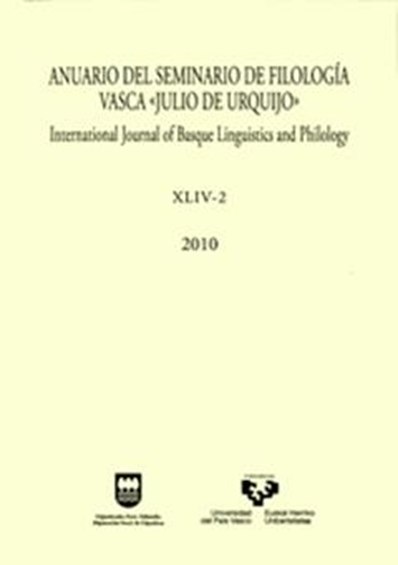Notas sobre la lengua vasca en las gramáticas misioneras de Melchor Oyanguren (1738, 1742)
##plugins.themes.bootstrap3.article.main##
##plugins.themes.bootstrap3.article.sidebar##
Published
18-04-2010
Antonio Manuel González Carrillo
Abstract
When Oyanguren decided to codify the Japanese and Tagalog languages, many other missionaries had already succeeded in this venture before him. In consequence the Franciscan is in debt of a long tradition that dates back from the XVIth century, and in which he does not hesitate to inscribe himself as an outstanding disciple. Such background does not diminish the originality of his work. On the contrary, the writings of the Basque seem to be inspired by a new impulse: original, profound, which thanks to being enriched by the testimonies of his precursors, helps to create a solid work, brimful of knowledge, reference to his immediate sources and illustrative comparison with other languages, such as Chinese, Hebrew, Malay, and also his mother tongue: Basque. Of all the perspectives that are analysable, the one that we shall focus on are the references to the Basque language made by the author in his grammatical writings.
How to Cite
González Carrillo, Antonio Manuel. 2010. “Notas Sobre La Lengua Vasca En Las gramáticas Misioneras De Melchor Oyanguren (1738, 1742)”. Anuario Del Seminario De Filología Vasca "Julio De Urquijo" 44 (2):367-91. https://doi.org/10.1387/asju.7335.
##plugins.themes.bootstrap3.article.details##
Issue
Section
Articles
This works is licensed under a Creative Commons Attribution-NonCommercial-NoDerivatives 4.0 International License.


